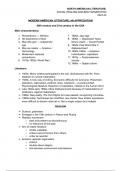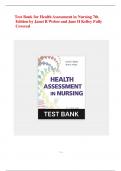Notas de lectura
Apuntes refinados de Literatura Norteamericana: Modernismo y Generación Beat
- Institución
- Universidad De La Laguna (ULL)
Estos son los apuntes refinados y editados de Literatura Norteamericana. Están todas las clases teóricas, todo lo que dijo el profesor, pero listo para estudiar y resumido. Se consiguió un 9.5 con estos apuntes
[Mostrar más]




